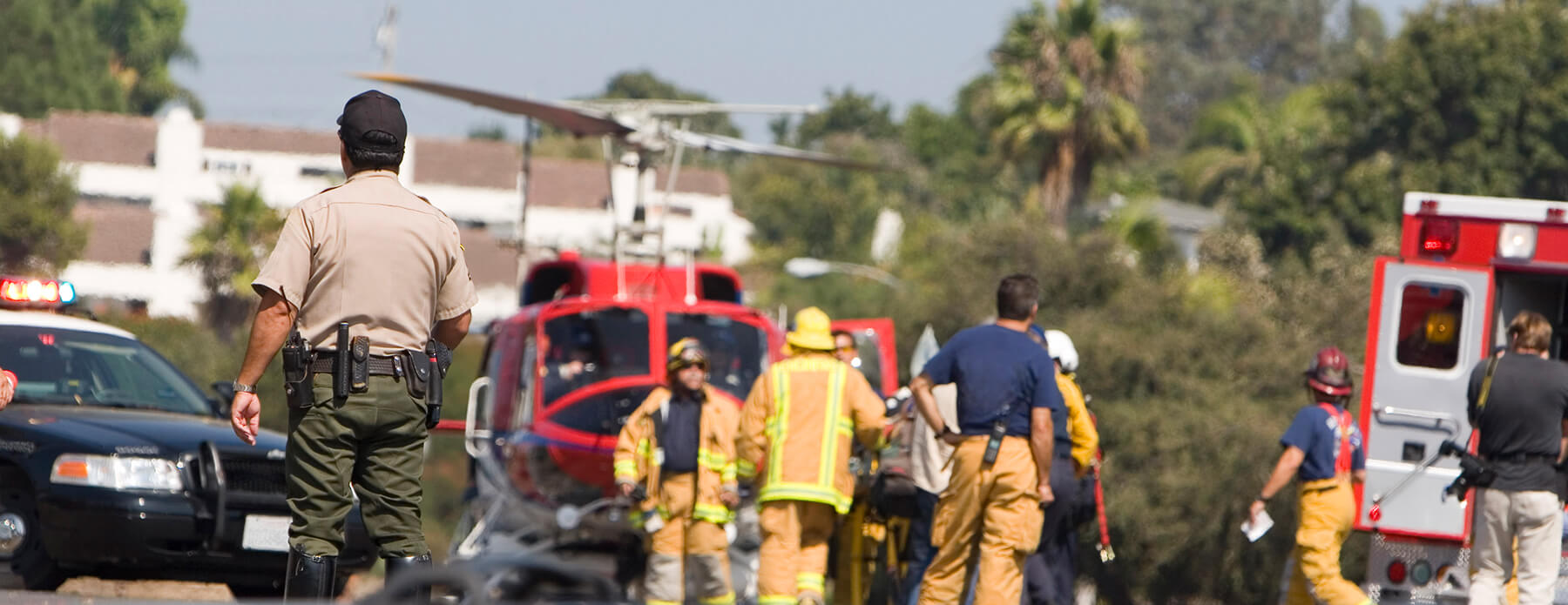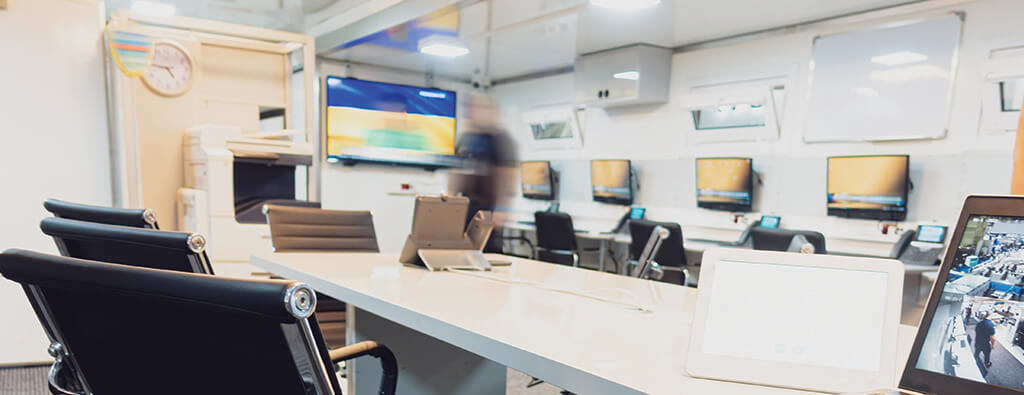By Cynthia Gutierrez-White, MS and Lea Price
It has been two grueling years that the world has been in the grips of SARS-CoV-2, the novel virus that disrupted life as we knew it. According to the World Health Organization, COVID-19 (its common name) infected 458 million people and was the cause of 6.05 million deaths worldwide. Now, in spring of 2022, mask mandates in the U.S. have relaxed, and many are beginning to find some comfort in the thought that COVID is a once-in-a-lifetime event.
But is it? Probably not. A 2020 report by a United Nations biodiversity panel stated that the probability of new outbreaks is increasing due to deforestation and changes in the climate.
So how do we prepare for the next outbreak? What lessons can we take from COVID-19? Our experts at Tidal Basin have first-hand experience responding to COVID-19 since the disaster declaration in 2020. With their knowledge, experience and innovation, our team continues to support efforts made to enhance resiliency among communities affected by COVID-19. We have set up large-scale recovery programs, supported COVID-19 federal programs through grant and case management, and assisted with planning and distribution of vaccines. Recently, Tidal Basin launched three state-level emergency rental and mortgage relief programs in response to the pandemic. We asked several of our leaders to weigh in on specific lessons learned from COVID-19, and how to prepare for future pandemics.
Crystal Klein, MEP, PCP, Emergency Preparedness Specialist for Preparedness, Resiliency, and Emergency Management (PREM)
“COVID-19 was a new experience, and no one knew much about it. There was a huge learning curve from the outset at every level in every industry. As we learned more, data changed, and policies on how to prevent, mitigate, and respond changed. It was a challenge to face a long-term disaster when no one knew how to manage it.
A disaster can have a positive result despite the damage it caused. For example, working remotely was a hard sell for many companies before the pandemic. Still, those companies had to develop work-from-home policies and were later surprised of its success.
Moving forward, after-action and improvement plans must include a comprehensive alternative staffing plan. During the pandemic, many workers became ill or had to take care of sick family members. Many older volunteers at shelters or food banks had health issues that made them vulnerable to the disease. Front line workers in healthcare and emergency management worked for many months without taking time off. When you have a long-term disaster with so many unknown factors, it is important to have a process that includes an organizational structure, emergency roles and responsibilities, and an alternate staffing plan to avoid burnout and address absences.
Lastly, make sure you and your family are prepared. Not just for 36-72 hours, but in the long term.”
Sheila Manek, Vice President, Housing, Community Development, and Infrastructure
“The pandemic preparedness was generally insufficient. Although federal agencies quickly moved to mitigate the financial impacts of the pandemic, the long-term economic effects will take some time to recover. Investing in risk anticipation for pandemic preparedness is an important lesson learned from COVID-19. Regarding emergency rental assistance programs, a need for clear and consistent guidelines dictating federal funds for rental assistance on the front-end would be beneficial to prevent the program from shifting course or reevaluating program design. Another lesson is related to the documentation challenges on the front-end during applicant intake. Allowing applicants to self-certify income or COVID hardships increased tenant participation.
For the next pandemic’s rent relief programs, it would be ideal to have more flexibility to adjust the amount or type of assistance based on households’ needs. For example, always allowing for assistance with past-due bills or providing an adequate cap that doesn’t fall short of a household’s average monthly rent in their locality. It is also important to consider racial and ethnic equity in designing and implementing rent relief programs. Without explicit attention to equity, programs may under-serve certain populations. This can be achieved through focused outreach and program participation.”
Luis Avila, Vice President, Mitigation
“COVID redefined the word ’essential’. As emergency managers and mitigators, we need to look at those areas considered ‘essential’, such as grocery stores, pharmacies, medical supply stores, and make sure we are mitigating those functions from all types of disasters. If those facilities are affected by other disasters (hurricanes, tornadoes, etc.) the community would be significantly affected. We need to look at protecting those facilities from all forms of hazards.
As for how we prepare for the next one, I recommend that surge capacity be reimagined with the lessons learned from COVID. As new hospitals are designed, or older facilities are remodeled, special consideration should be taken regarding building infrastructure in common areas of the facility to support patient surges. An example is quick connects for generators. These are great additions to smaller facilities, ensuring they have the power needed to function. That approach should be expanded to quick connects for other critical utilities that can be tapped into if makeshift (tent) patient areas need to be erected outside of the hospital structure. Other recommendations include the reevaluation of reverse pressure air systems to ensure cross-contamination is mitigated and the implementation of traditional mitigation measures that protect essential facilities from all hazards such as flooding and tornadoes.”
Bill Slater, Vice President, Recovery
“While all-natural disasters are unique as far as areas affected and their specific impacts, experience has taught us that the recovery methodology is repetitive and predictable.
For COVID-19, there was no playbook to reference; therefore, the biggest lesson learned was the importance of adapting on-the-fly. Since this threat was never experienced before and was not visible or predictable, we learned new things every day.
This, in turn, forced changes in policy and procedures that could not be reliably anticipated.
In preparation for the next pandemic, the best thing we can do is note the lessons learned from COVID-19, apply them, and know that the next one will likely come at us with many unknowns and require many adjustments.”
Preparing for future pandemics is difficult under any circumstance, but now is the time to prepare. Whether it’s participating in drills and tabletop exercises, conducting after-action reviews to improve plans and response, reaching out to emergency management experts or consultants, or educating your emergency management teams on federal funding, we can all do our part to get ahead of the next pandemic.
Contributors |
|
| Crystal Klein, MEP, PCP Emergency Preparedness Specialist for Preparedness, Resiliency, and Emergency Management (PREM) Ms. Kline is an award-winning writer, Oklahoma’s first female federally certified Master Exercise Practitioner (MEP), a certified HSEEP Trainer, and a certified Professional Continuity Practitioner. She was an adjunct instructor at FEMA’s Emergency Management Institute in Emmitsburg, MD, and instructor at the University of Oklahoma Resilience Development Institute. |
|
| Sheila Manek Vice President, Housing, Community Development, and Infrastructure Ms. Manek has over 15 years of experience as a Subject Matter Expert, Director, Program Manager, and Product Development and Research Engineer. She has extensive experience in emergency planning, response and recovery, program development, and management with expertise in the administration of U.S. Department of Housing and Urban Development (HUD) and Federal Emergency Management Agency (FEMA) Federal Grant Programs. |
|
| Luis Avila Vice President, Mitigation An emergency management executive with more than 20 years of experience, Mr. Avila serves as Tidal Basin’s Vice President (VP) of Mitigation. As VP, he oversees all mitigation operational functions of the company including Hazard Mitigation Grants management across the United States and territories. Mr. Avila’s extensive experience consists of over two decades in emergency and consequence management, preparedness, response, and recovery. |
|
| Bill Slater Vice President, Recovery As an emergency management professional, law enforcement officer, fire fighter, and emergency medical technician, Mr. Slater has extensive experience as a disaster professional and emergency response volunteer. His more than 20 years of law enforcement experience includes supervisory roles that eventually led to his assignment as a station commander. He served at the “ground zero” New York City Mayor’s command post following the September 11, 2001, World Trade Center Terrorists Attacks in support of the rescue and recovery efforts. |
|



